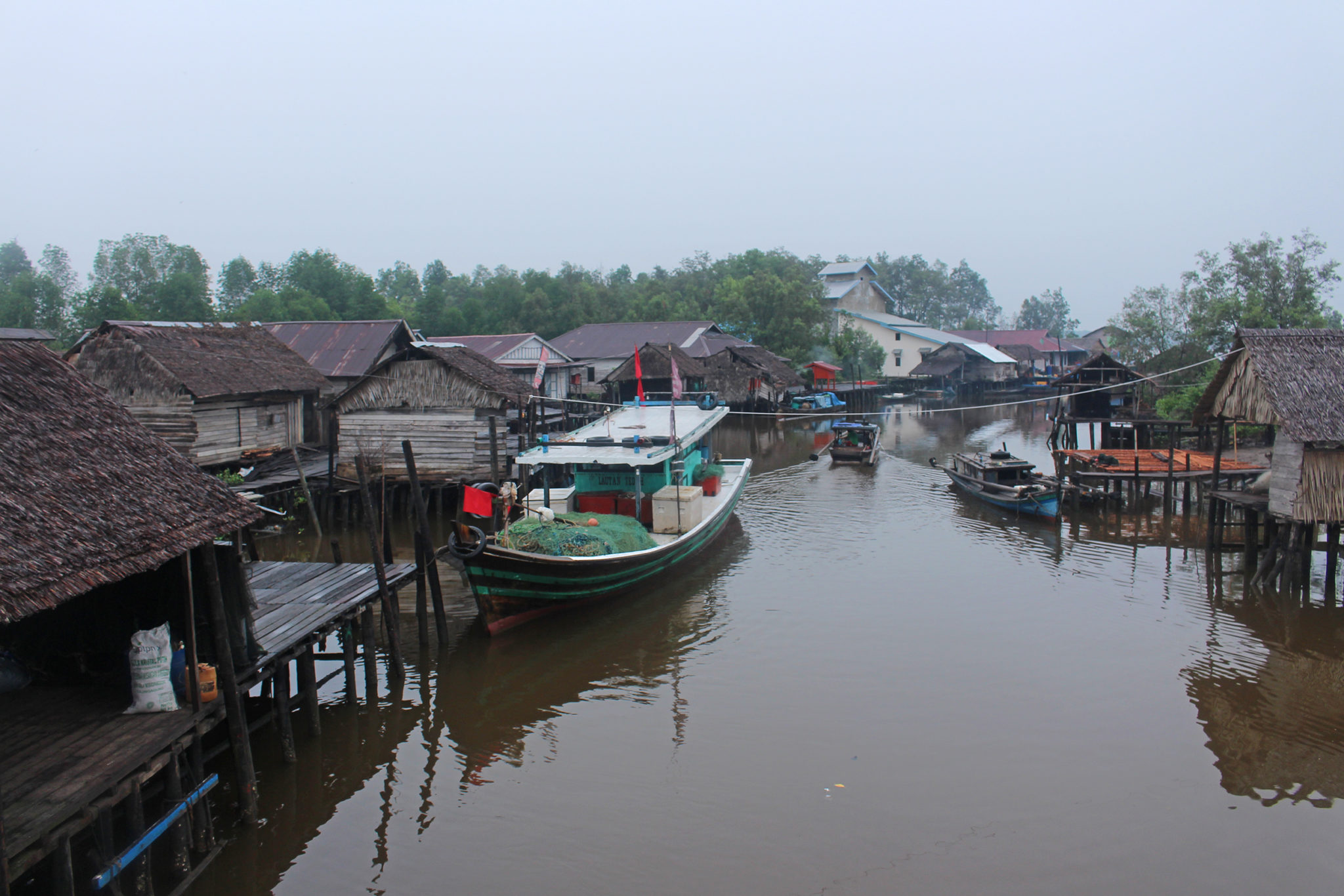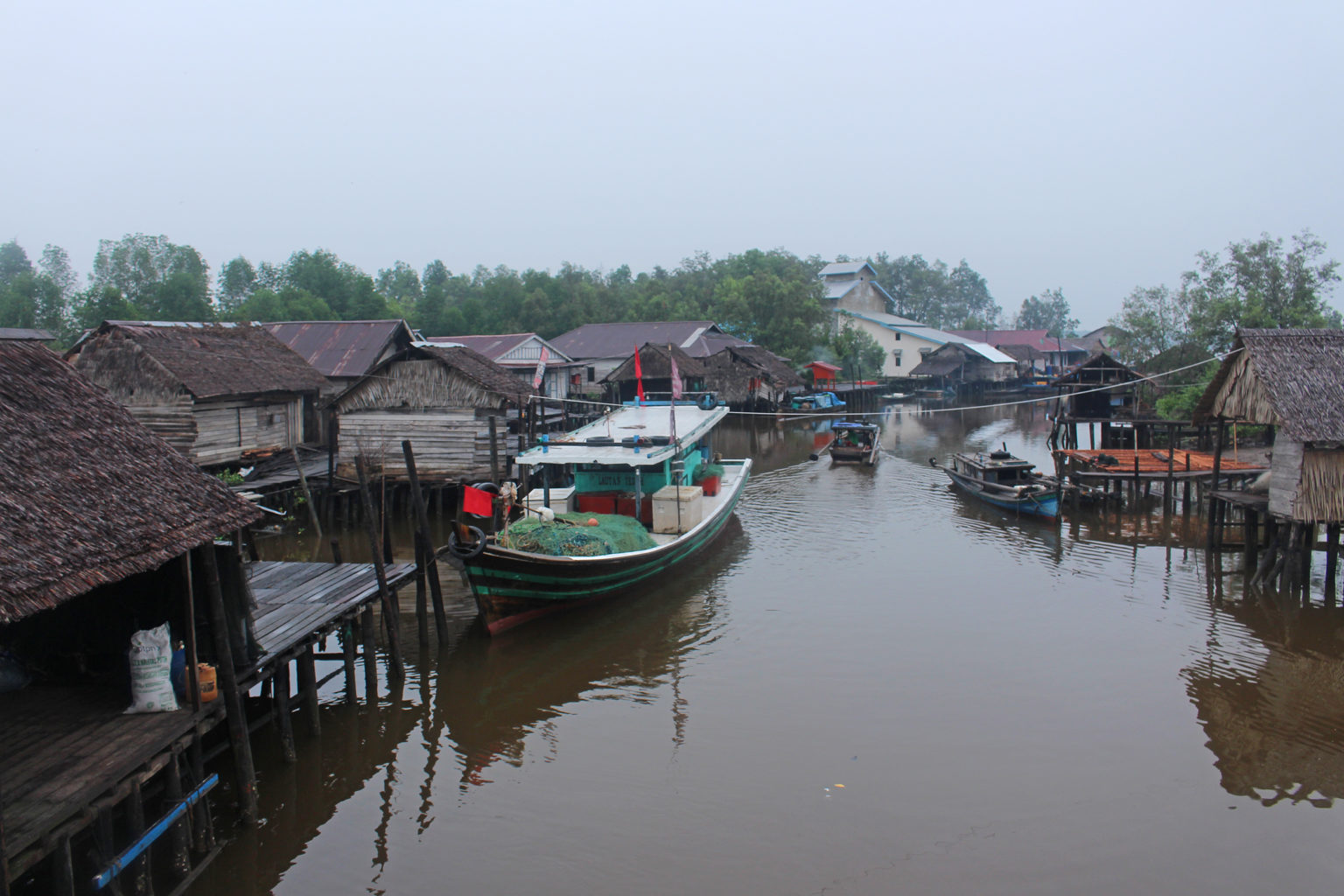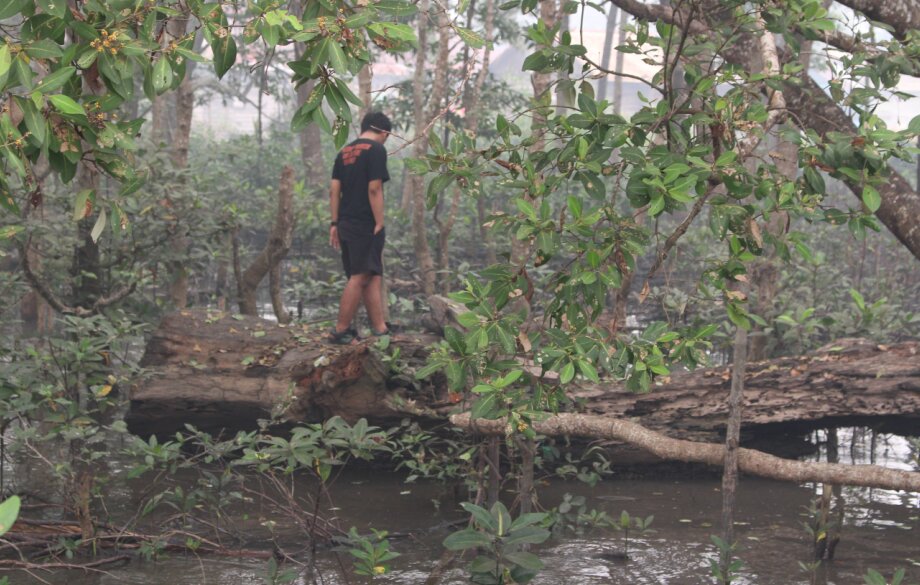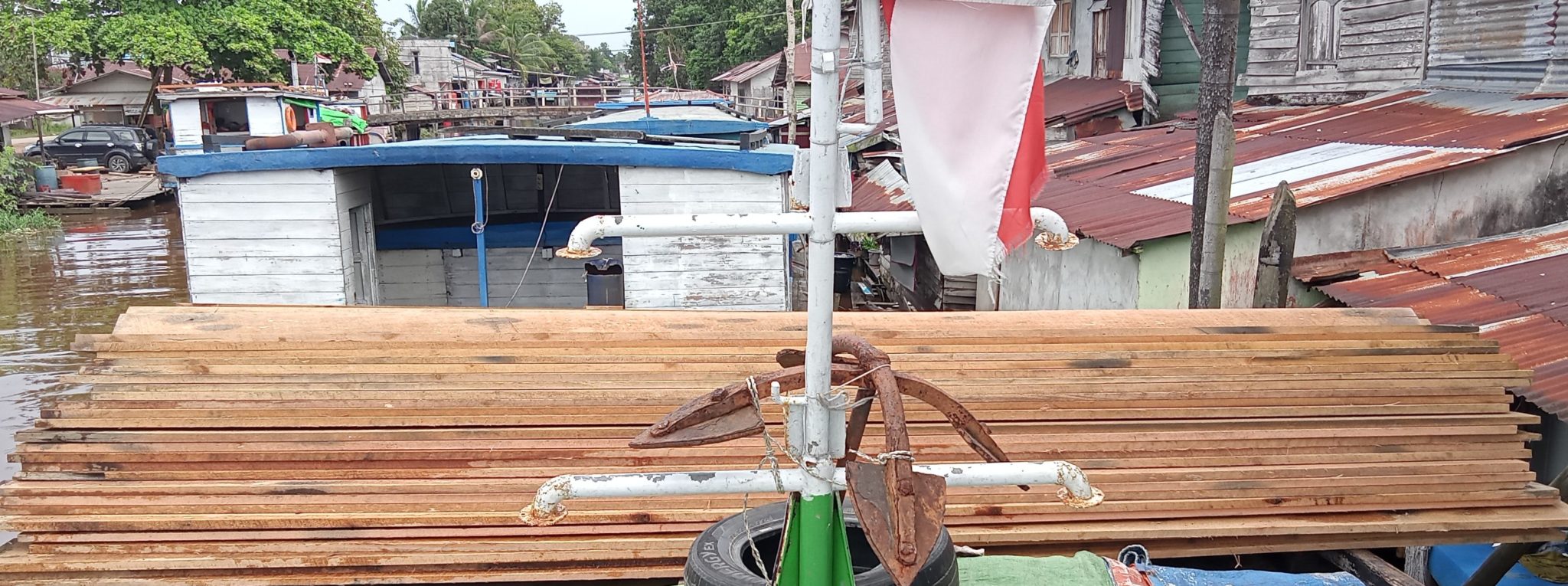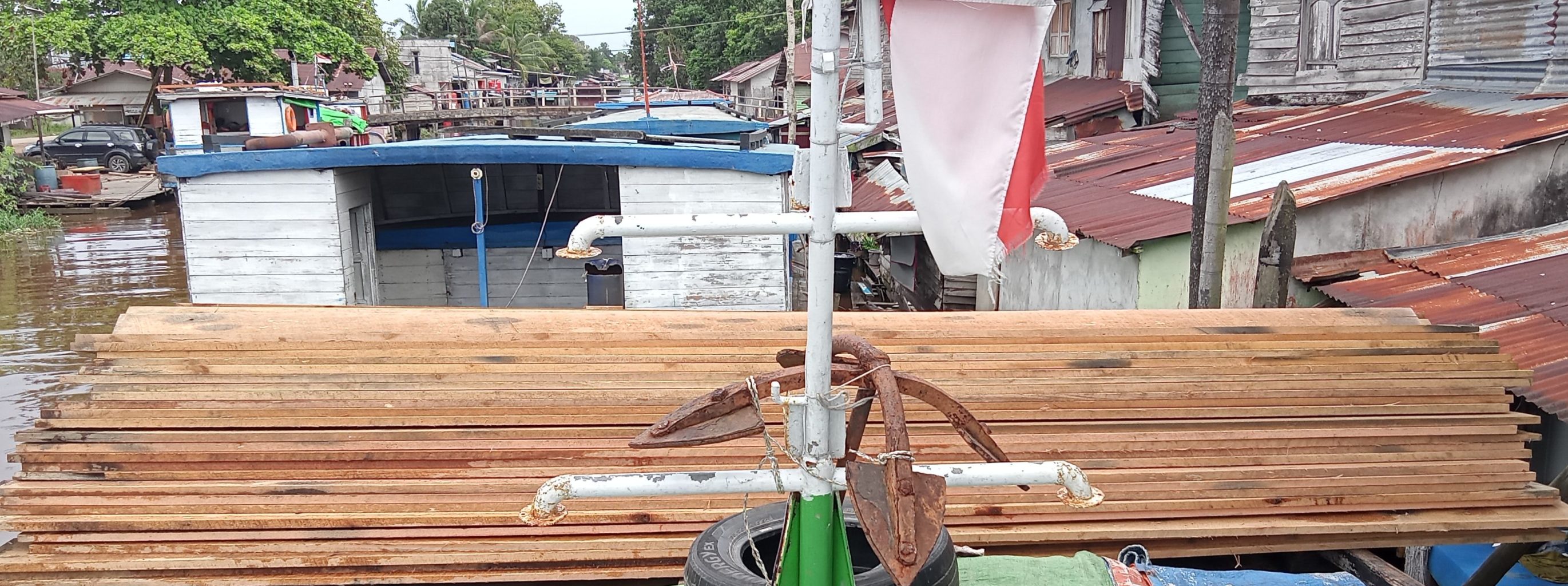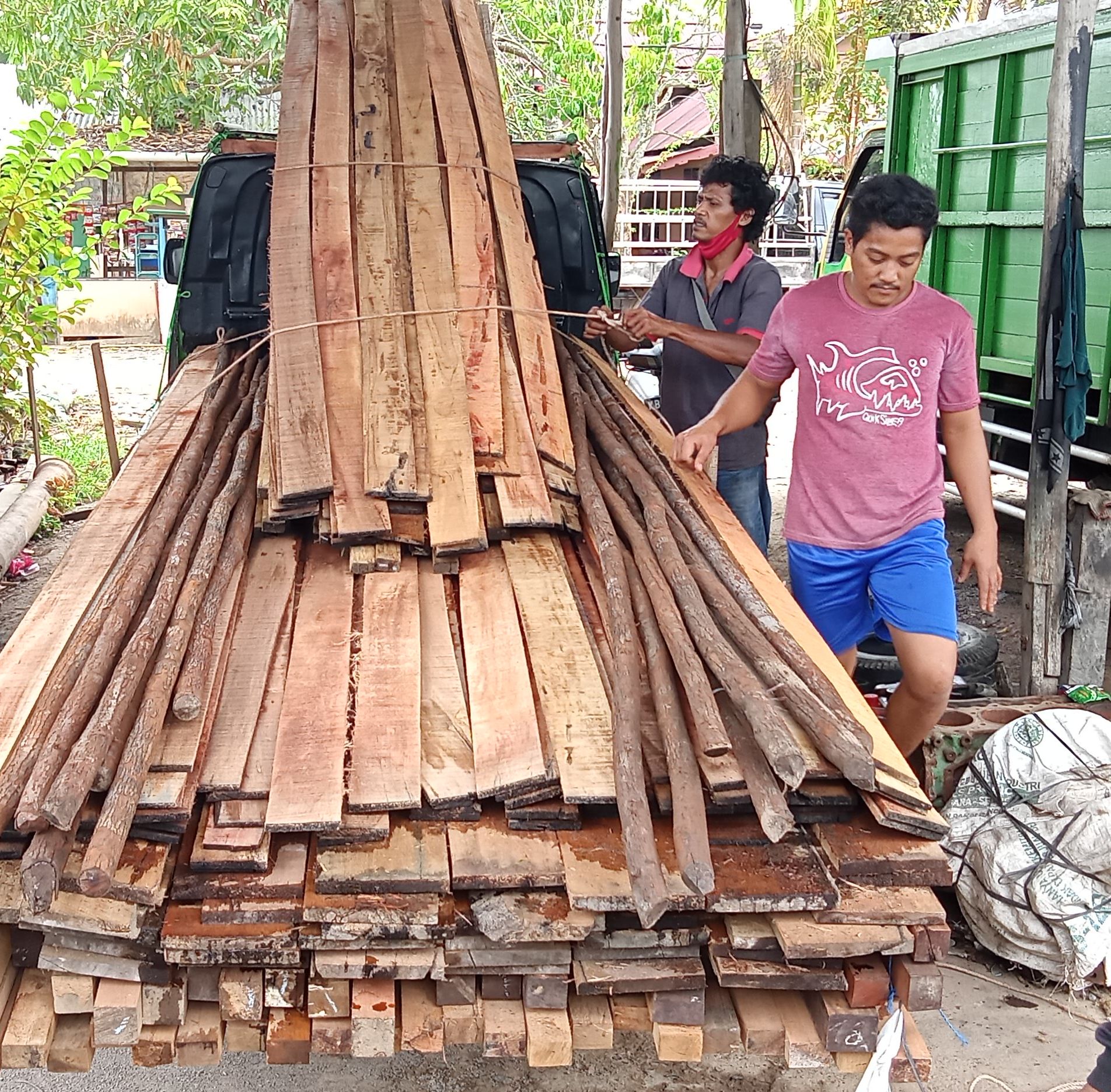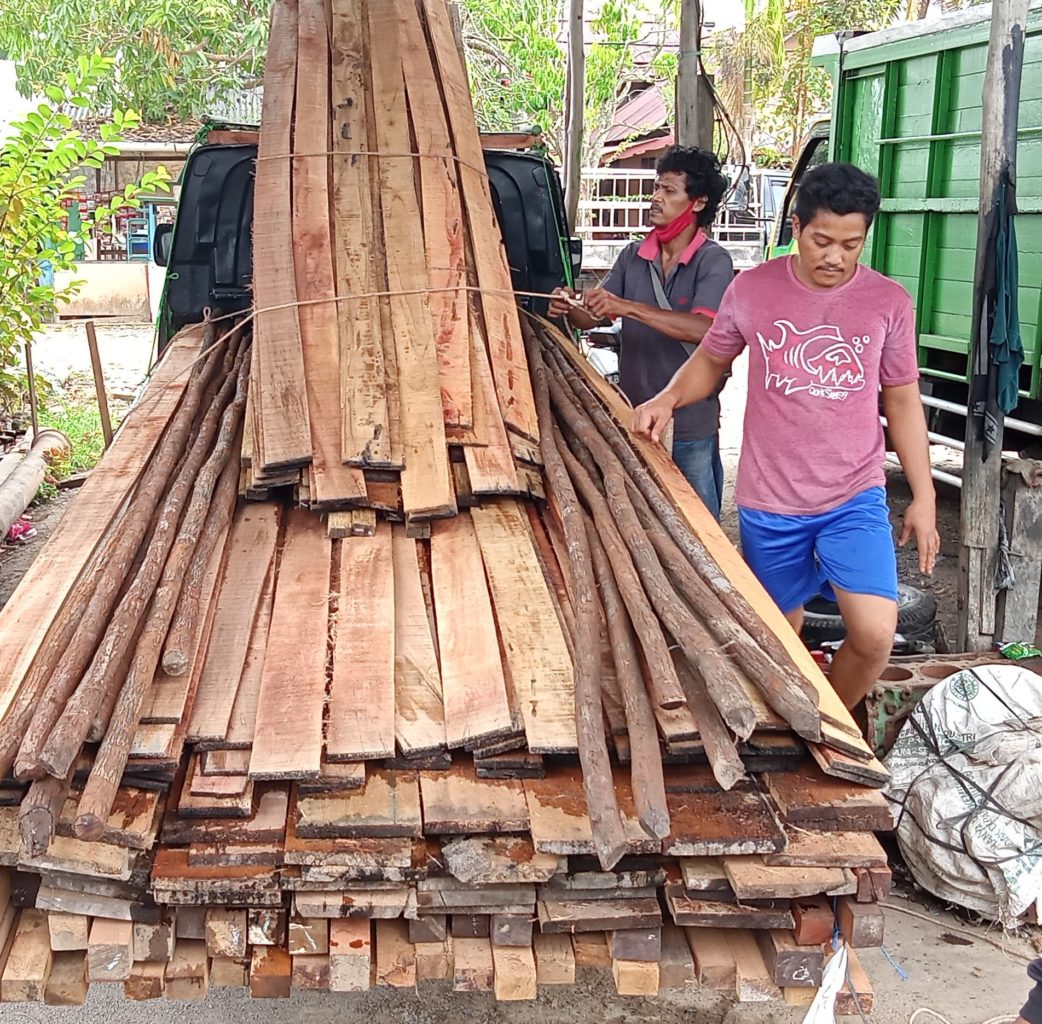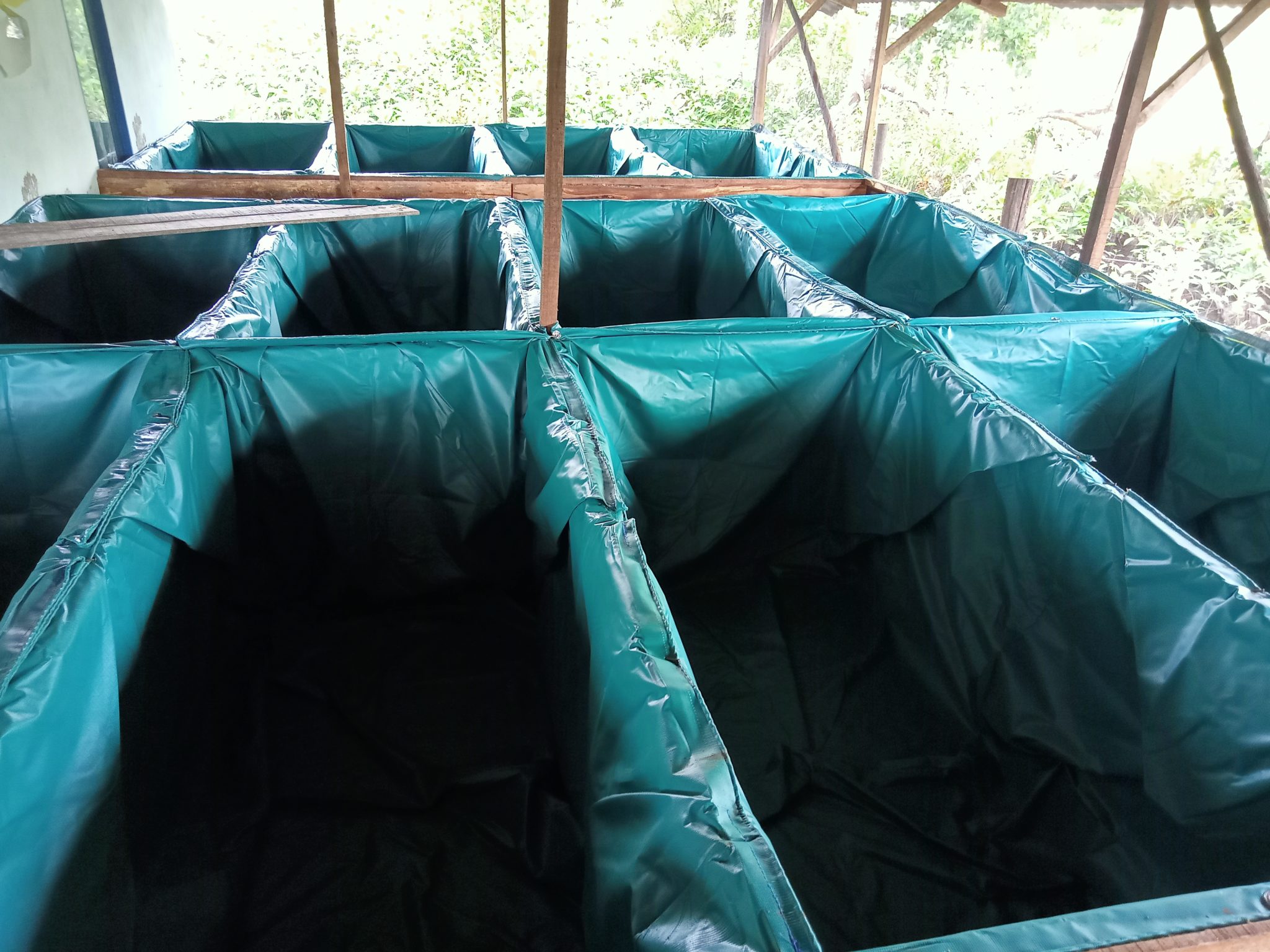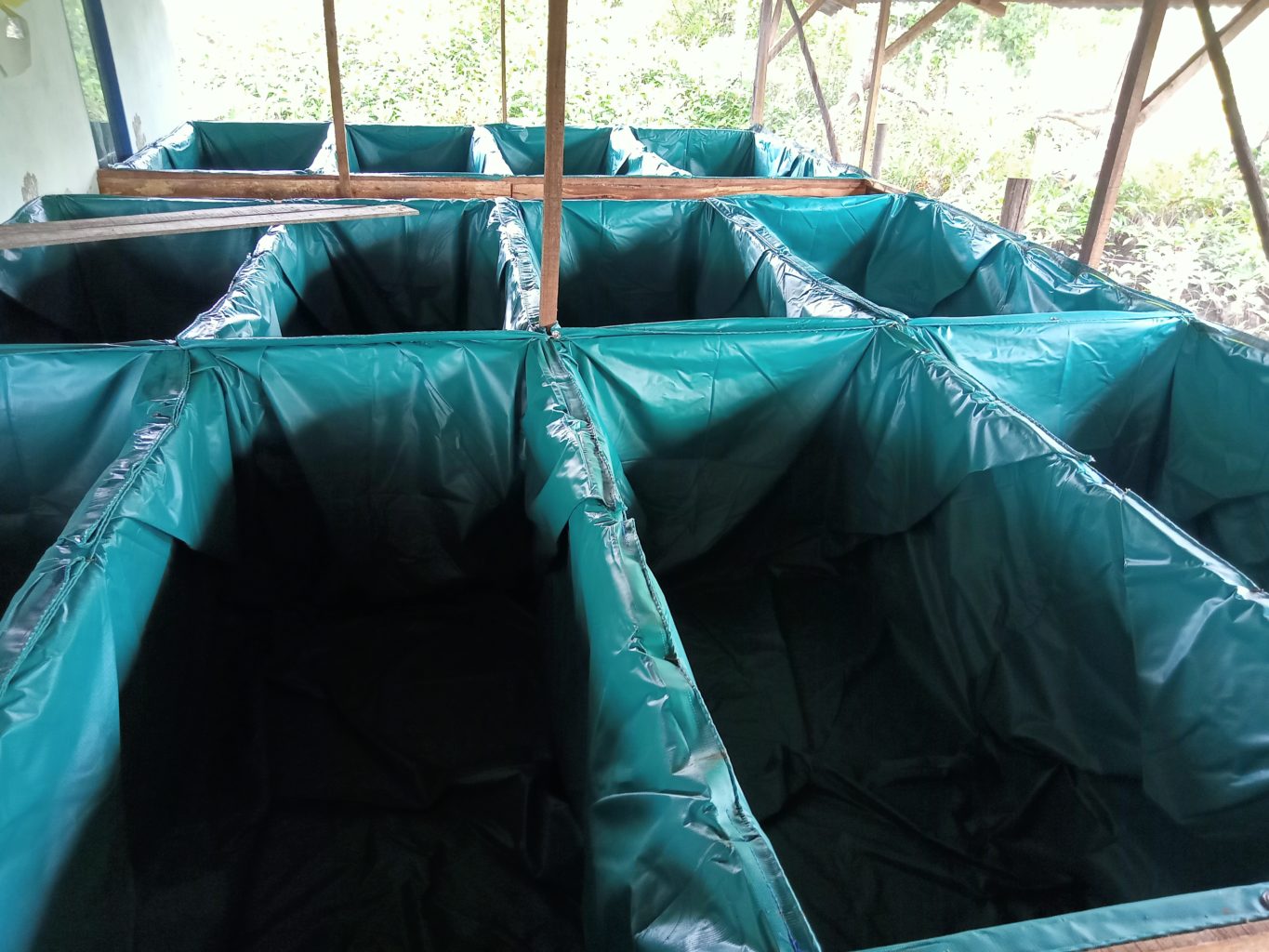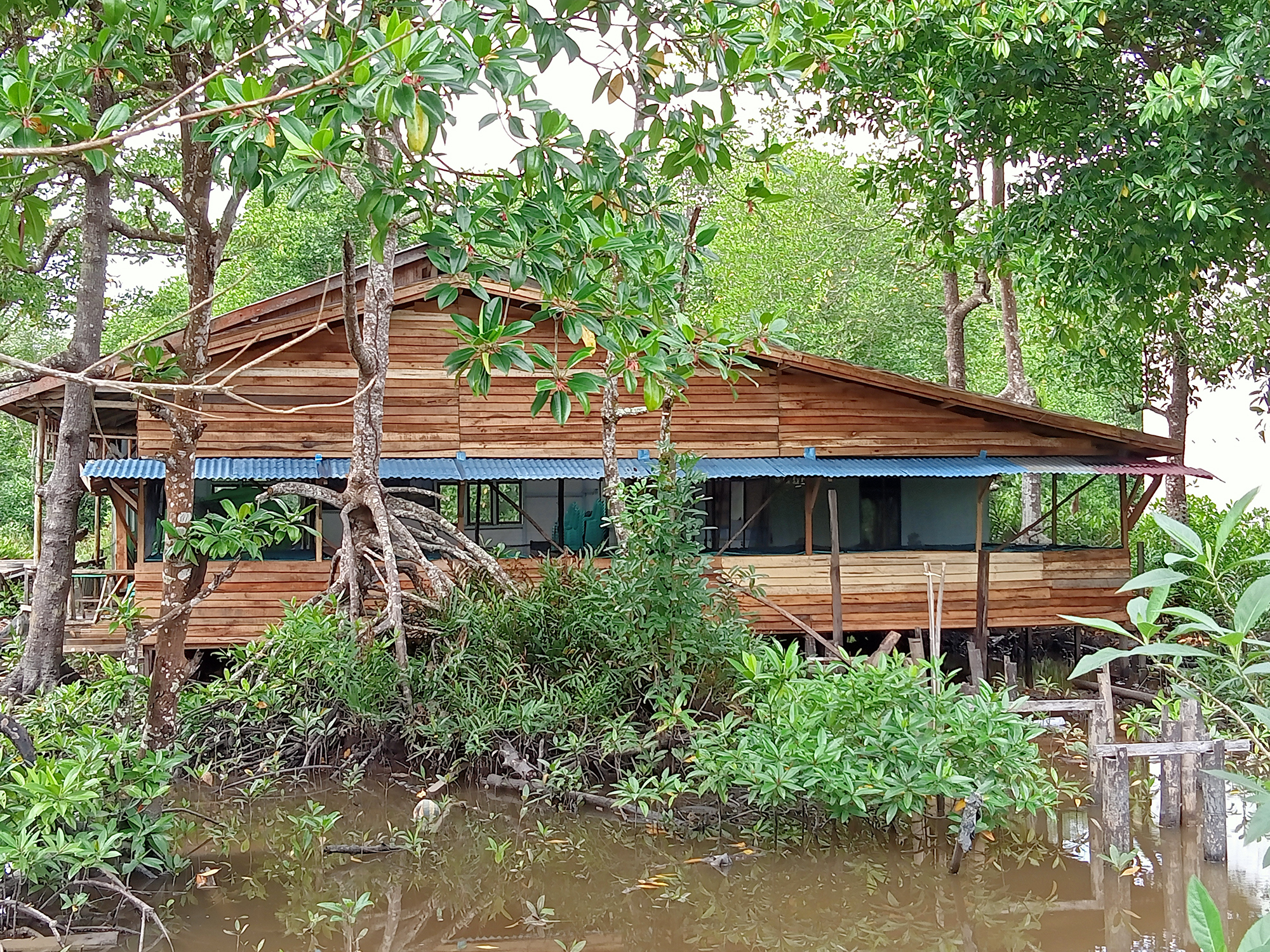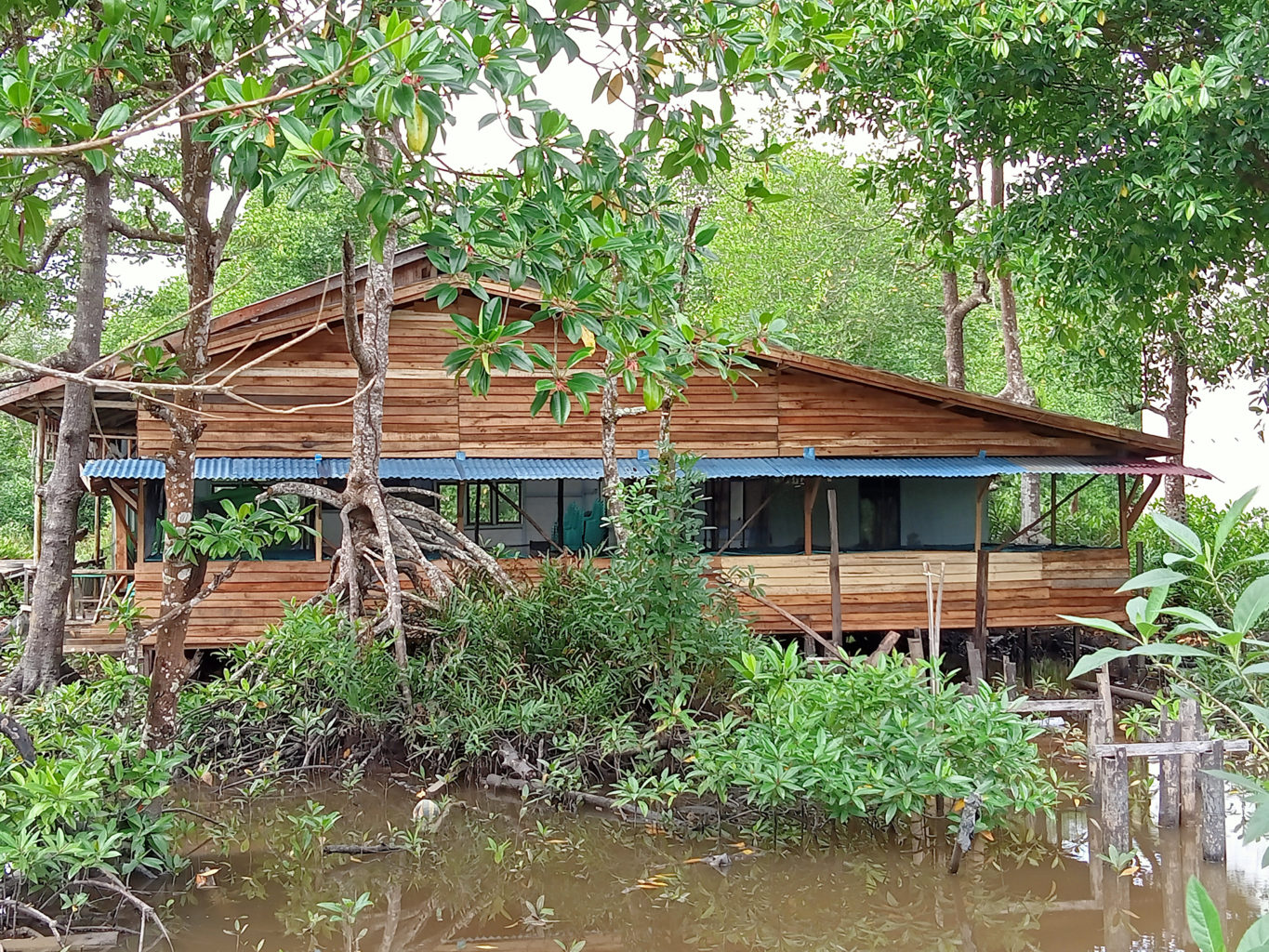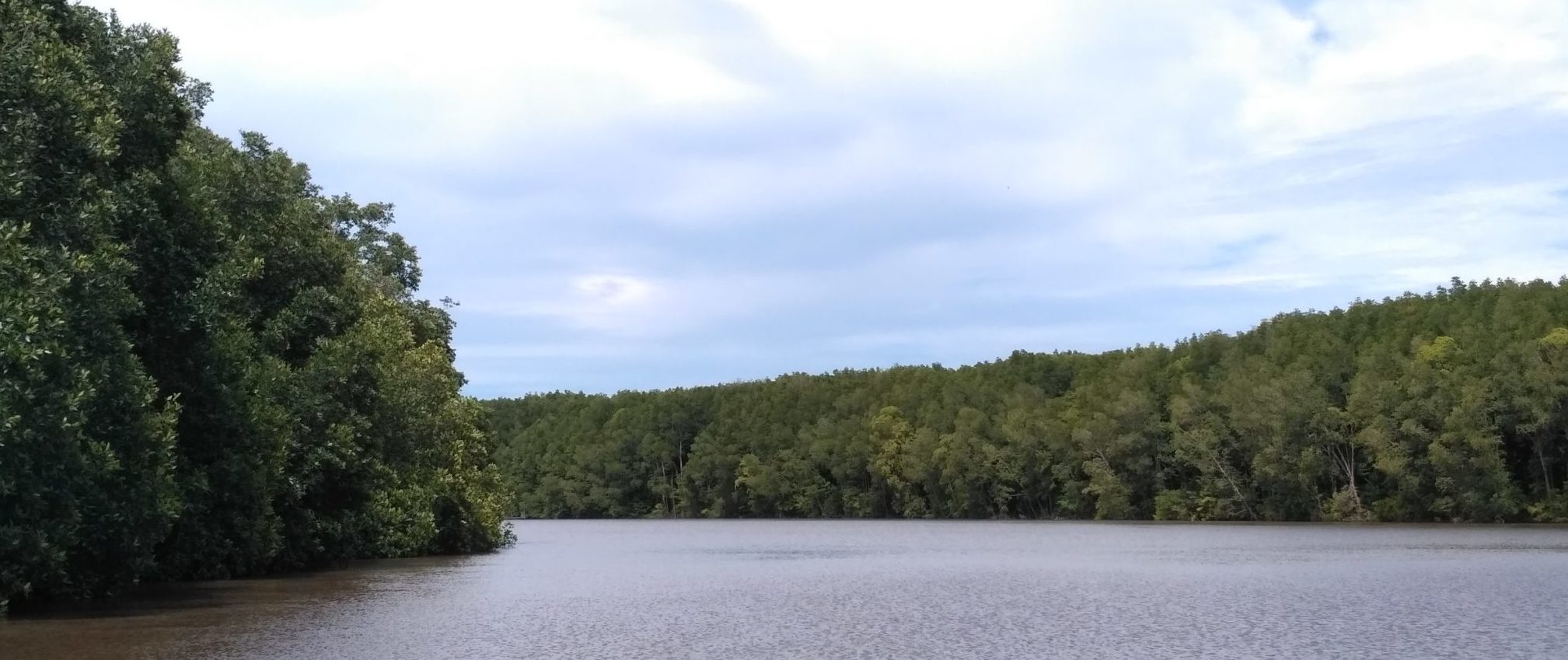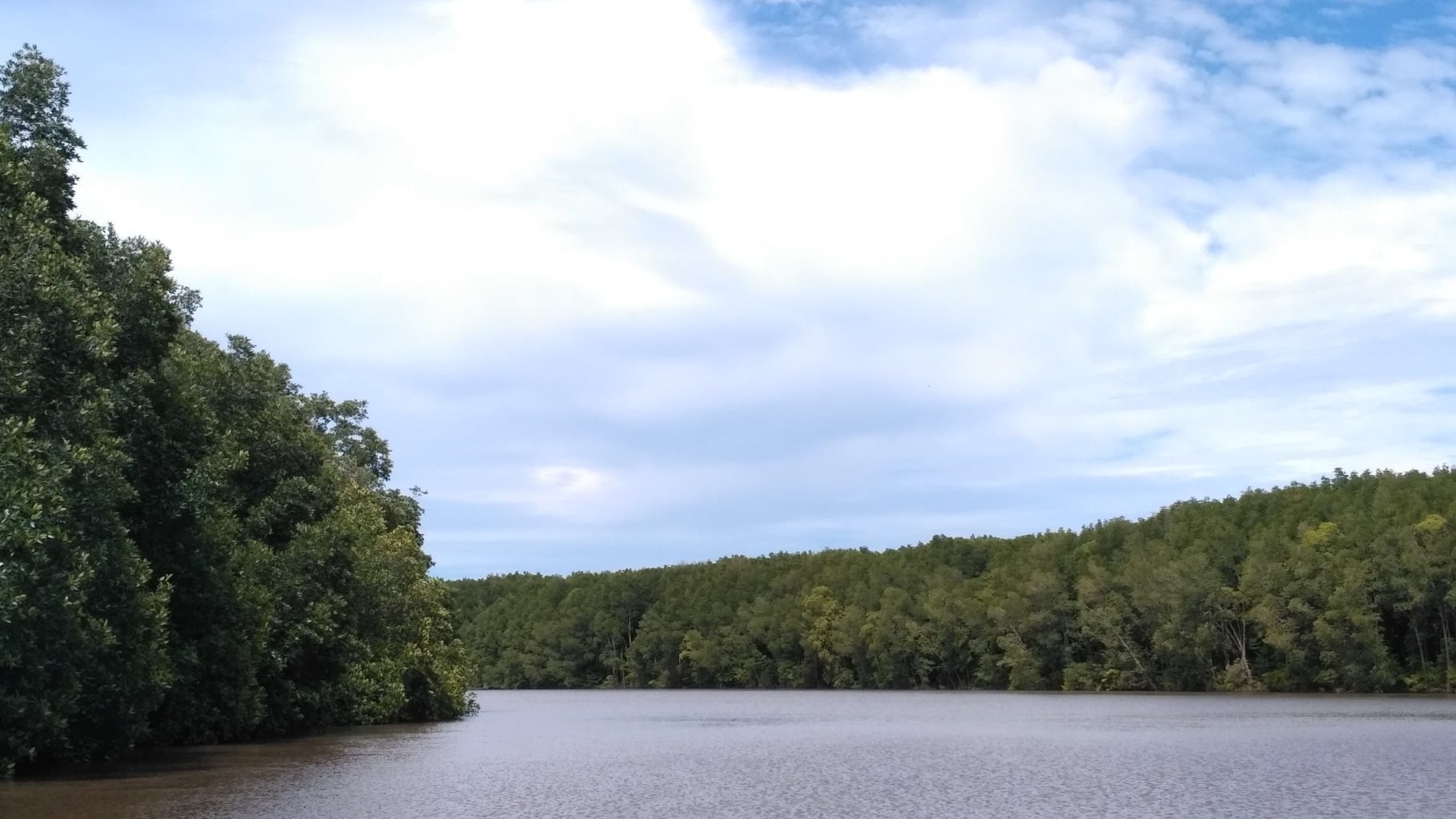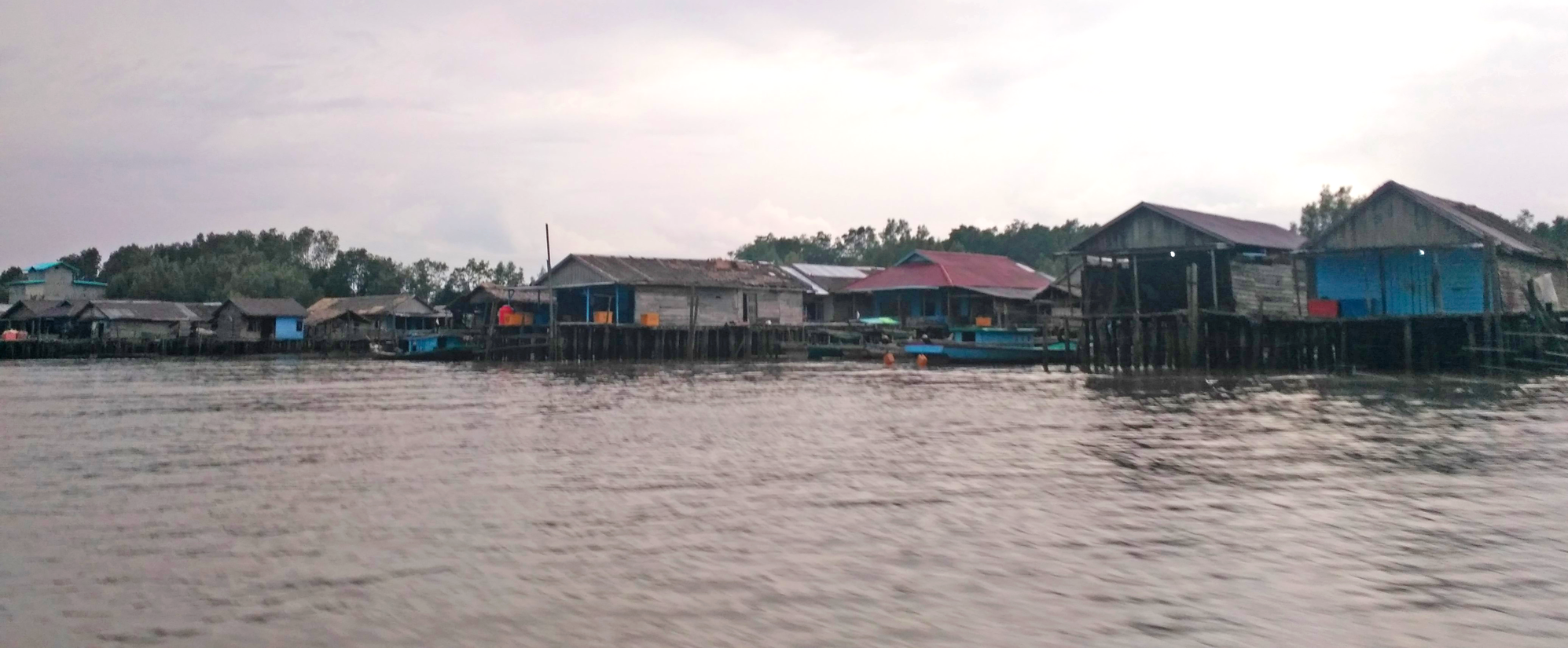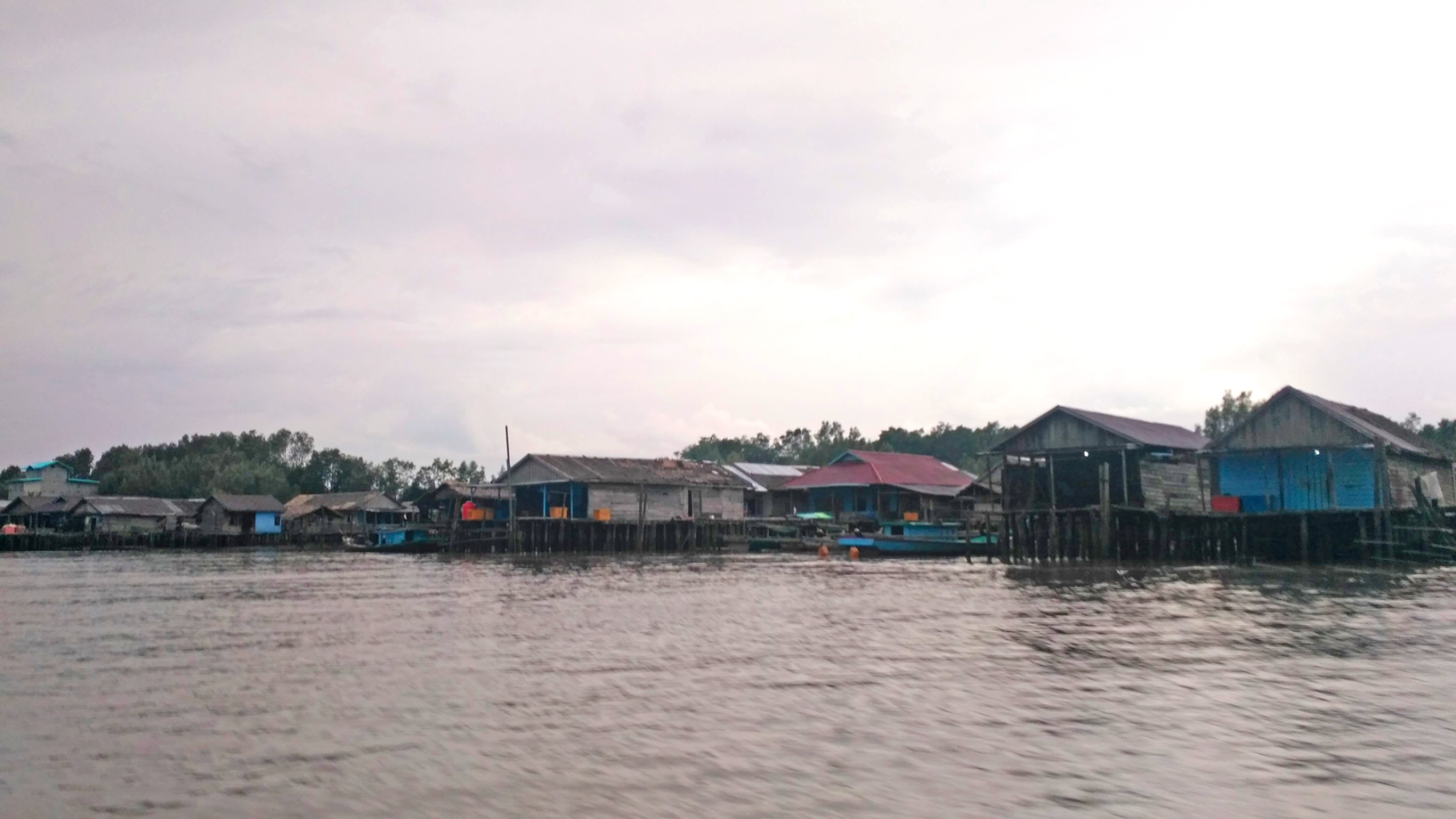On Borneo’s west coast, where the Nibung River flows into the Java Sea, villages depend on healthy mangrove forests for their survival. Most people make a living from catching crabs, shrimp, and fish that live in brackish water among the mangroves. The mangroves also protect them from the winds and waves of big storms.
When destructive fishing methods and tree-clearing began to deplete the fisheries, the people of Sungai Nibung took action to protect the forest. Three-person teams patrol the mangroves every day. They also rotate fishing and crabbing so that no area is under constant pressure.
These forests, just miles from the equator, are home to a hugely diverse set of creatures. Orchids twine among several species of mangroves and other trees as long-tailed monkeys and langurs navigate the branches. Barking deer graze below. There are hundreds of species of resident and migratory birds, from tiny sandpipers to albatrosses with 10-foot wingspans. In the water, there are dolphins, green and hawksbill sea turtles, crocodiles, and plentiful crabs and fish.
The village requested Seacology’s help to build a facility to support the crab fishery. In the wild, most crab hatchlings don’t survive to maturity. The villagers will collect small hatchlings and let them grow until they’re big enough to have a better chance at survival. Eventually, they will harvest some of those crabs. The village will also buy walkie-talkies, a surveillance drone, and a laptop, to help them keep an eye on the mangrove area. This program will foster economic security—and provide a greater incentive to enforce strict protection of the mangrove forest.
Our nonprofit partner is INTAN, the Institute for Forest Product Technology, Research and Development. It helps indigenous villages develop livelihoods from sustainable forest products. We worked together for the successful conservation of a peat forest in Rasau Sebaju on Borneo.


